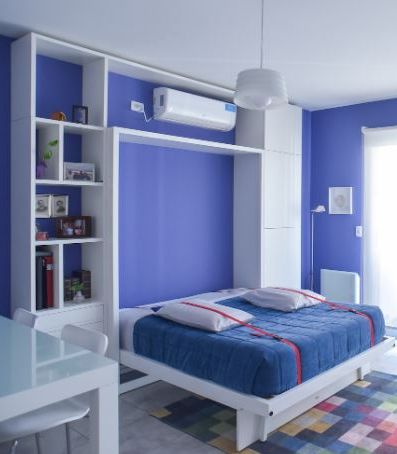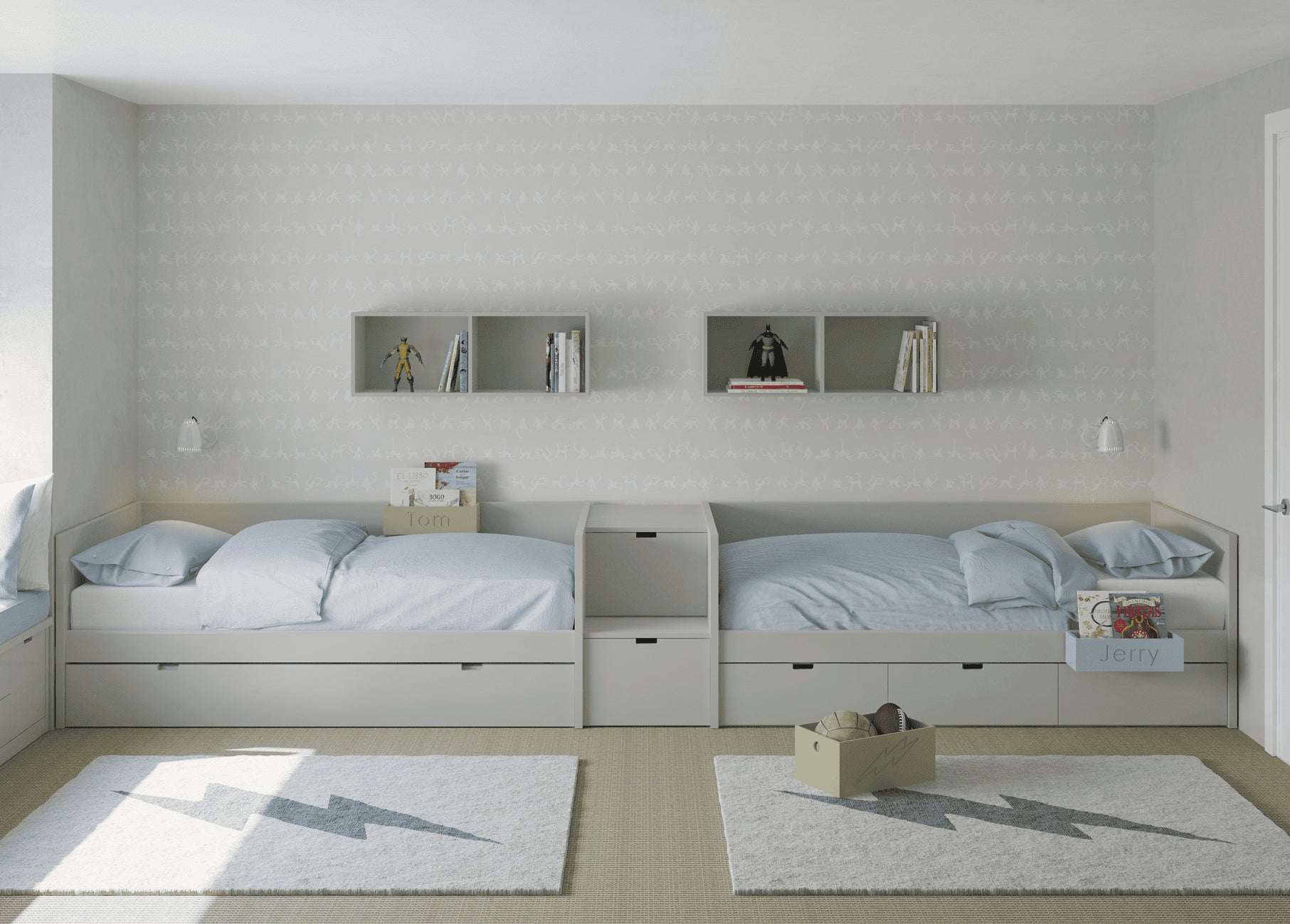
Guide to Buying a Foldable Bed: What Should You Consider?
The choice of a folding bed is a functional decision to optimize space in a room. Before diving into the purchasing process, it is essential to consider various aspects to ensure you make the best decision.
Below, we present a comprehensive guide that addresses the key aspects you should consider when buying a folding bed.
WHAT IS A FOLDING BED?
A folding bed is a type of collapsible bed furniture designed to optimize space in rooms. This piece of furniture, which can take the form of a wardrobe, bookshelf, or even a sofa, conceals a bed within its structure.
Its primary function is to provide a practical solution in rooms with limited dimensions, allowing for the efficient use of every corner. Although originally conceived for this purpose, folding beds have gained popularity and are now used in a variety of living spaces.

HOW TO CHOOSE A FOLDING BED?
- Available Space: Accurately measure the space where you plan to place the folding bed. Consider height, width, and depth to ensure a proper fit.
- Compatible Mattress: Check the dimensions and type of recommended mattress to ensure a comfortable sleeping experience. It's crucial that the mattress has dimensions 3 cm below the closing height to avoid any difficulties.
- Folding Mechanisms: Evaluate the ease of use of the folding mechanisms. Look for smooth and secure systems that allow comfortable handling, especially if the bed will be used by children. Note that folding beds come with different types of openings: manual, semi-automatic, and automatic.
- Stairs and Railings: When choosing a folding bunk bed, ensure it comes with stairs and railings. If not included, they can be purchased and integrated.
- Additional Space Usage: Some folding beds come with integrated storage options, such as drawers or shelves. Assess whether these additional features are beneficial for your storage needs.
TYPES OF FOLDING BEDS
-
Vertical Folding Bed: This type of bed folds vertically upwards, occupying less space in terms of horizontal projection. It is ideal for rooms with high ceilings and limited floor space.
-
Horizontal Folding Bed: In contrast to the vertical type, this bed folds horizontally, making it a suitable option for wider spaces with height restrictions. It is commonly found along long walls.
-
Folding Bunk Bed: A folding bunk bed combines the bunk bed concept with foldable functionality. It may consist of a foldable bed on the top and another at the bottom, maximizing the use of vertical space.
-
Wardrobe Folding Bed: This type of bed hides within a wardrobe when not in use. The wardrobe door becomes the base of the bed when folded down.
-
Folding Bed with Bookshelf: By integrating shelves into the design, this bed offers additional storage options, making it a practical solution for smaller rooms.
WHERE TO INSTALL THE FOLDING BED?
The folding bed should be installed on the wall of the children's bedroom. While not the most aesthetically pleasing or practical option for a child's room, it is a viable choice, especially in small spaces.
Conclusion: Making an Informed Decision
When purchasing a folding bed, the key is to make an informed decision. If you are looking to optimize space in your children's room, we recommend exploring our collection of trundle beds and bunk beds. Designed for small spaces and siblings sharing a room.
Transform your home smartly and discover more!


